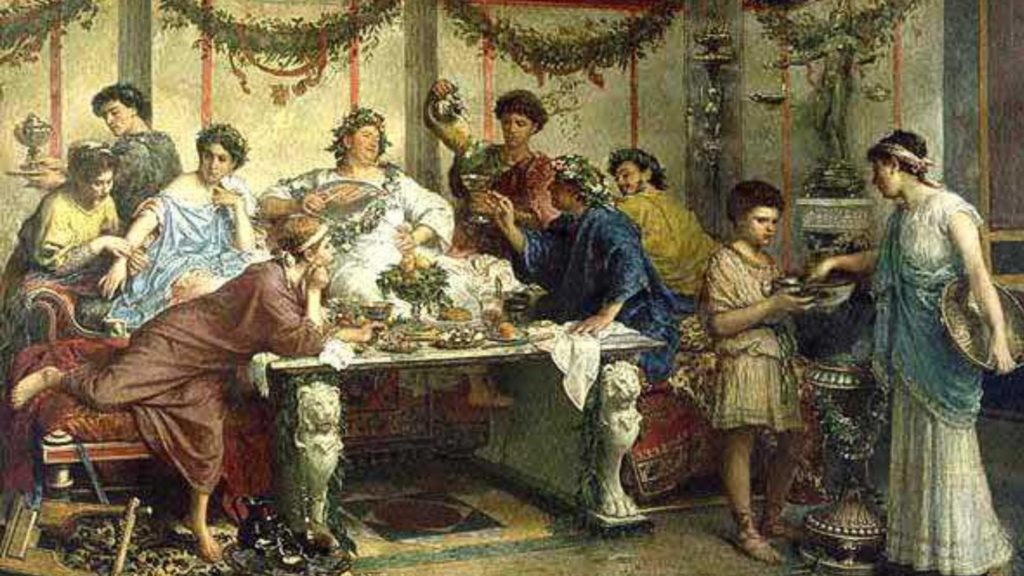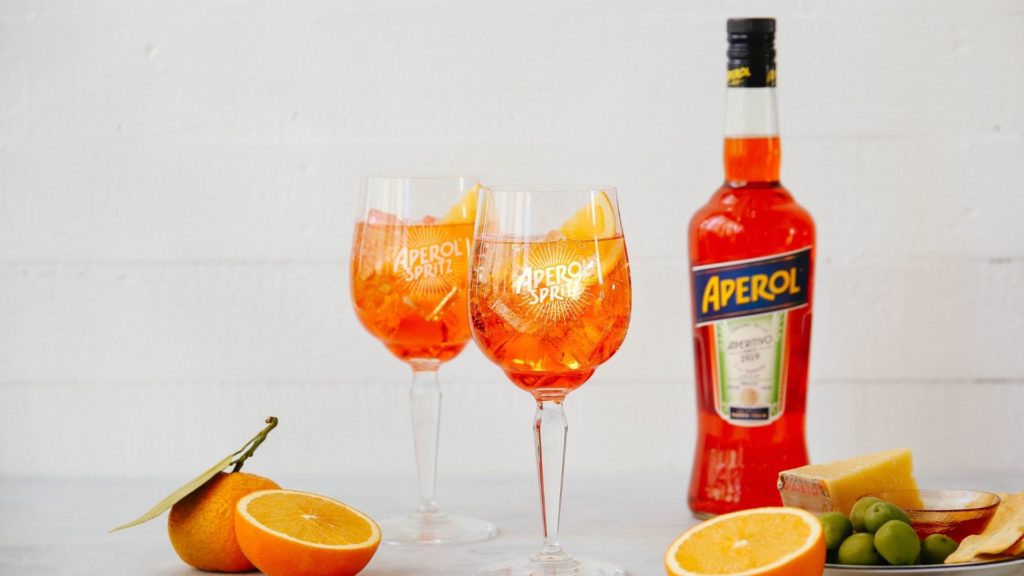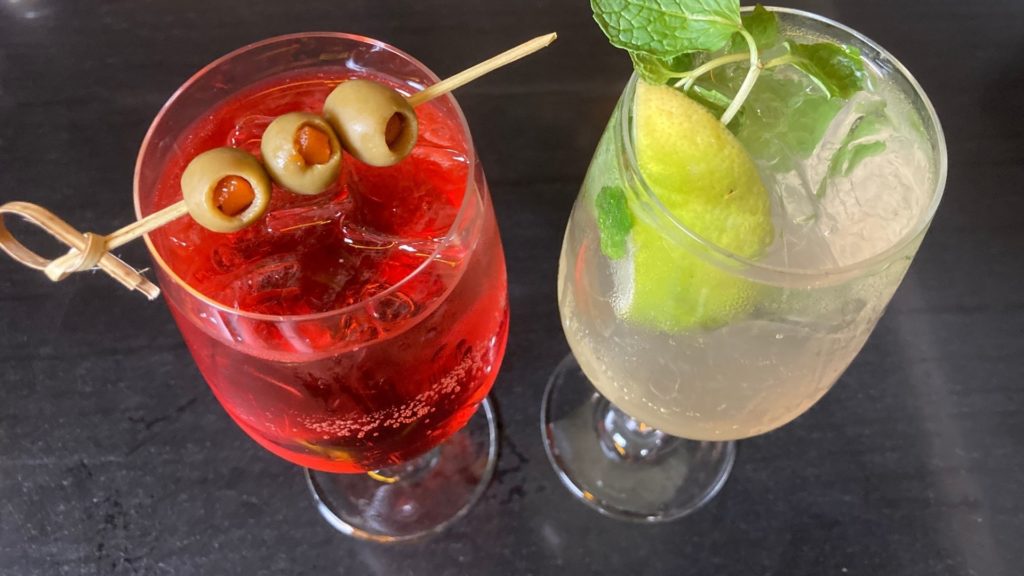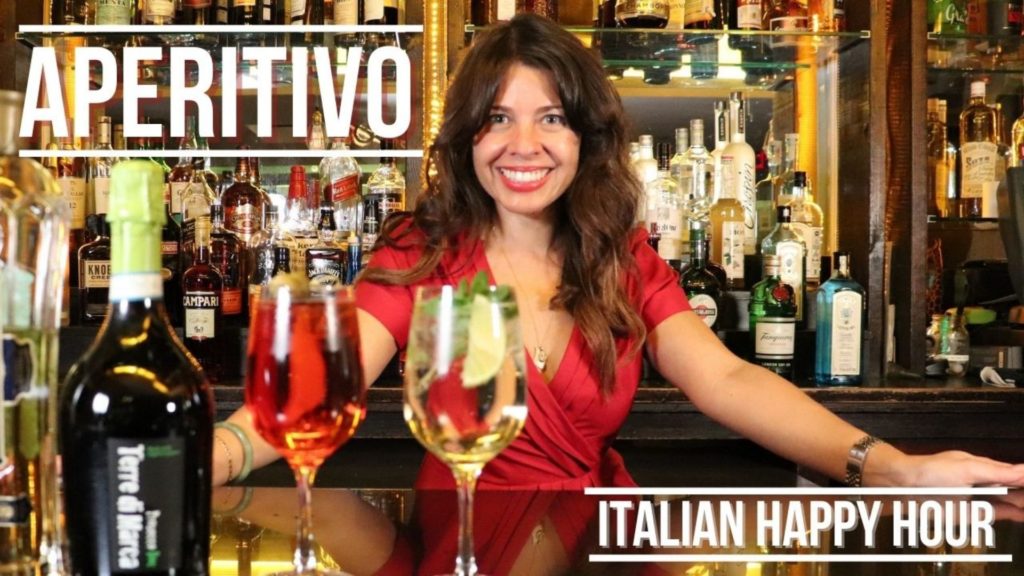DiVino may earn commissions from qualifying purchases.
We were thrilled to collaborate with Amex Essentials magazine’s Tastemakers series for this video all about the cherished tradition of the Italian aperitivo. As any avid Italian traveler will tell you, the aperitivo is a right of passage, a quintessential stop on the way to dinner, and sometimes it can even be dinner itself. Read on to learn more about the origins of this beloved and delicious ritual.
What is the Aperitivo?
In short, it is a pre-dinner (and sometimes lunch) ritual of drinking a cocktail, alcoholic or non, accompanied by some light snacks, designed to stimulate the appetite. For travelers on a shoe-string budget, the abundant Aperitivo Milanese has become an industry secret for eating well on the cheap. Most of all, it is a ritual. A moment to sit down, relax, and invite the evening in.
Aperitivo. Apéritif. Apéro.
The word also refers to the a whole family of spirits (as well as non-alcoholic concoctions) that all share a common denominator: an infusion of herbs and an element of bitterness. Consider some of the world’s most iconic aperitivo brands: Campari, Aperol, and Martini and Rossi. Each of them has a storied past that began well before the bar. While their recipes remain a tightly-guarded secret, they’re known to contain ingredients like bitter orange (chinotto, or citrus myrtifolia), cascarilla bark, and rhubarb, all hailed for their curative and digestive properties.
A Bitter History of the Pre-Dinner Cocktail
Long before we were guzzling Negronis over heaping plates of savory snacks, ancient cultures all over the world were curing upset stomachs and digestive disorders with roots, bark, and wild herbs. Back in the 400s BC, Hippocrates, a Greek doctor often referred to as the “father of medicine,” and perhaps best known for his namesake ethical oath to do no wrong, documented a cure made from wine, absinthe (artemisia absinthium), fraxinella flower, and various roots as an appetite stimulant.

Aperitivo Roman Style
The Romans adopted Greek medicine and in imperial fashion developed the habit of a drinking an herb and honey-infused wine, called mulsum, along with appetizers in anticipation of the feast to come. In fact the origin of the modern term, aperitivo derives from the latin word aperire: to open up or uncover.
Medieval monasteries, who cultivated grapes for the production of communion wine, were also the safe-keepers of ancient herbals medicines. The cloister gardens were utilized not only for meditation, but also to grow proprietary herbs used for a whole host of health tonics, and supplied apothecaries for centuries.
Modern History of the Aperitivo
The aperitivo we know today, that convivial after-work drink was born at the cafés of Torino during the late 18th Century, around the time that Antonio Benedetto Carpano released what is widely considered the first Vermouth. He distilled a dry white wine with a blend of 30 herbs and spices and sold it from his storefront in Piazza Castello.
Before long, the drink became popular at cafés throughout the city, enjoyed alongside local Piedmontese delicacies like bagna càuda (raw vegetables dipped in an anchovy-and garlic fondue) and local meats and cheeses as an anteprima to dinner. The habit soon spread throughout Italy, and well beyond the borders. In Italy today, you can expect at minimum, a selection of salty snacks (salatini) whenever you order a drink at the bar, especially starting late in the afternoon.

Aperitivo Cocktails
While aperitivo refers to the ritual as well as specific bitter-based spirits, like Campari and Aperol, it also refers to the cocktail itself. Popular aperitivo recipes include Campari Soda, Aperol Spritz and the Negroni Sbagliato, as well as Martini & Rossi on the rocks, or even a simple glass of wine. Nowadays people drink whatever they feel like, but the traditionally the aperitivo is based on a bitter, herb-infused spirit or a dry, white wine with a long, mineral, mouthwatering finish. Remember, the original goal of the aperitivo is to build your appetite.

A History of Spritz
The spritz (or spritzer) has come to be known as anything (even juice) mixed with a splash of sparkling water for extra flavor and fizz. A regular go-to for dieters, the spritz is also a popular way to get your kicks with half the calories. Interestingly enough, the original spritz cocktail was created for similar reasons.
As legend tells it, the spritz was born in Venice. At that time the area was under Hapsburg control, but the Austrians were unaccustomed to the higher-alcohol wines from the surrounding Friuli and Veneto regions, and so they watered them down with a spritzen, German for a splash of water.
Aperol Spritz
The spritz cocktail as we know it today, most famously as the Aperol Spritz, was popularized in the 20th Century, with the advent of bitter spirits like Aperol and Campari. In the case of Campari, the original creators were bar owners in Milan, where they perfected the recipe town that end of the 19th century.
Aperol was created by the Barbieri brothers, and made its debut in 1919 at an expansive industry expo in Padova, not far from Venice. It soon made its way into bars as an added flavor element to the wine and water spritz. As early as as the 1930s, the spritz was portrayed as low-calorie option, and targeted at women, with ads portraying ladies at the tailor, who, while measuring their waistlines proclaims, “Ma’am, Aperol keeps you thin!”
These days, the most common Aperol Spritz recipe is simple Aperol, Prosecco, and a splash of sparkling water.

Aperitivo Recipes
Campari Spritz
The Campari Spritz is simply a variation on the Aperol Spritz that uses Campari. We garnished it with green olives in part as a nod to holiday colors, but also for a an added element of bitterness and earthiness encased in a juicy olive to really elevate that complex spectrum of herbal aromas in the Campari.
Hugo
The Hugo is quite a bit more modern. It was designed as an even lighter alternative to the classic spritz, and was originally made with an extract of the Melissa plant, also known as Lemon Balm, which grows wild in the mountains of Trentino-Alto Adige, where the Hugo was born. These days it is most often created with an Elderberry syrup or liqueur like San Germain.
Watch the video
Taste them in New York City
If you’re in the New York City Area, starting December 1st, both the Hugo and the Campari Spritz will feature as holiday specials at Bread and Tulips Restaurant.



